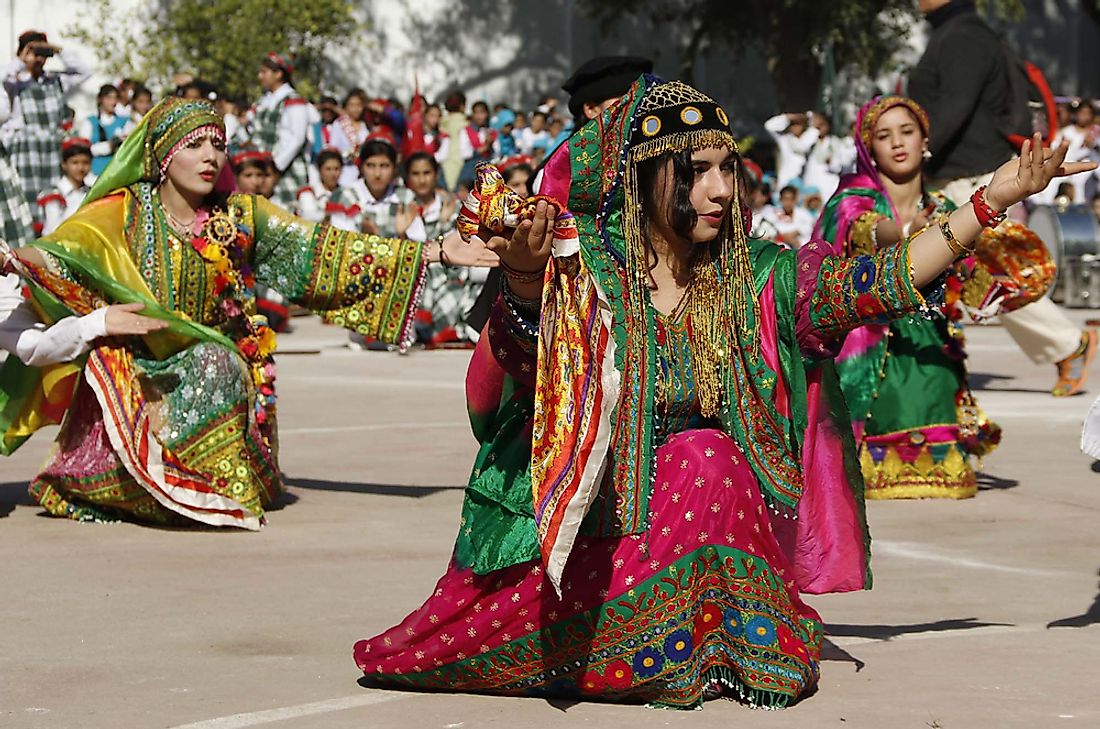Pakistani Culture, Customs, And Traditions
Officially known as the Islamic Republic of Pakistan, Pakistan is a nation that is located in South Asia. The nation has multiple ethnic groups and cultures such as Punjabis, Kashmiris, Muhajirs, Pashtuns, Shinaki, and a few other communities scattered all over the country. Aside from their own cultures, these groups have come to form a new culture that has been heavily influenced by the neighboring countries and their cultures. Pakistan’s culture is unique among the other nations of South Asia.
Languages
The country’s population speaks more than 60 languages. Among them all, Urdu is the national language with a huge portion of speakers at 75%. In addition to being a national language, Urdu is also a symbol of the Muslims as well as the lingua franca (or common language) of the country. Despite Urdu being the main language in the country, only 8% of the population uses it as a primary language. The other official language is English, which is used by the government and for legal matters. For the most part, the masses use a special variation of English that is known as Pakistani English. In addition to these two languages, the constitution recognizes Arabic as an important language in the teaching of Islam.
The most common language is the Punjabi language (44.15% of the population) and is mostly used in Punjab. Other languages include Sindhi (12%), which is mostly spoken in Sindh, Saraiki (10%), which is mostly spoken in Hindko, South Punjab, and the larger Hazara region, as well as other languages. In each of the five provinces of the nation, there is a provincial language that is not recognized by the national law.
Cuisine
Like in most other countries in Asia, the food in Pakistani is influenced by its neighbors. In the case of Pakistan, the foreign influence is from Afghanistan and the Middle East in general. The different regions of the country have differences in cooking styles and techniques. For example, the provinces of Sind and Punjab known for their spicy cuisine that is similar to Indian food. By contrast, northern and western provinces such as Azad Jammu and Kashmir and Khyber Pakhtunkhwa prepare food that is mild and less spicy, which is similar to the cooking styles of Central Asia. Examples of Pakistani foods include the likes of biryani, boiled rice, and kebabs.
In addition to the local cuisines, international styles have affected the nation as well. In fact, fusion food (a mixture of foreign and local recipes) is a common practice, especially in the country’s urban areas. An example of fusion food is Pakistani Chinese Cuisine. Despite all these international effects, the diversity in the country always ensures a wide array of delicacies.
Poetry
Pakistan has a rich collection of poems classified into different categories such as English poetry, Baluchi poetry, and Pashto poetry. Another category, Sufi poetry, is strongly rooted in the country. Since the region was strongly admired by Persian rulers in older periods, Persian poetry is quite popular as many poems about the region came from Persia. Poetry is not only practiced at the national level but also at the provincial level. Since Urdu became a national language after independence in 1947, most of the poems are now written in Urdu. Some of the renowned poets who have written poems in Urdu include the likes of Ahmad Faraz, Ahmad Nadeem Qasmi, and Faiz Ahmad Faiz.
Celebrations
Pakistan has several celebrations that it observes. Like any other country with a Muslim population, Pakistan observes the holy month of Ramadan. During this month, all Muslims fast from morning until evening and attend the mosques more often. In addition, there are related festivals such as Eid ul-Fitr and Eid ul-Adha to mark the passing of the holy month of Ramadan.
Aside from religious celebrations, the nation also marks Independence Day on the 14th of every August, which is representative of the day when Pakistan gained freedom from British India. To mark this special day, people gather for national prayers in mosques all over the country. In the morning, those who lost their lives in the fight for independence are remembered by a 21 cannon salute. Other events include singing the national anthem and decorating the cities and buildings.
Recreation And Sports
Field hockey is the officially recognized sport of Pakistan even though squash and cricket are more popular. The national field hockey team has had some success in the Hockey World Cup as it has won the trophy four times. The national cricket team has won the Cricket World cup of 1992 followed by a runners-up performance in 1999. The nation has also played host to the 1987 and 1996 Cricket World Cups. The cricket team has also won other accolades such as 2009’s ICC World Twenty20, the Austral-Asia Cup (three times), and the ICC Champions Trophy in 2017.
Internationally, the nation has participated in the Summer Olympics in sports including field hockey, athletics, shooting, boxing, and swimming. Hockey is the sport in which the Pakistanis have had the most success with after winning three gold medals in 1960, 1968, and in 1984. Since its introduction in 2005, A1 Grand Prix racing has gained some popularity as well. Another sport that is on the rise is soccer.
Architecture
The nation’s architecture goes all the way back to pre-Islamic periods to the post-colonial times. In fact, some of the structures such as the tombs of Bibi Jawindi, and Baha’is-Halim, which are all in the town of Uch Sharif, have been on UNESCO’s tentative list since 2004. Some of the pre-Islamic structures that are available to this day include Mohenjo Daro, Kot Diji, and Harappa. The Muslims introduced some classical techniques that are still available up to this day. Colonial times were dominated by an Indo-European style while post-colonial times are dominated by modern architecture.


